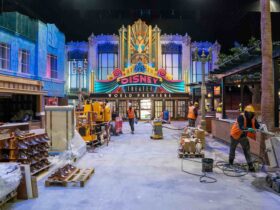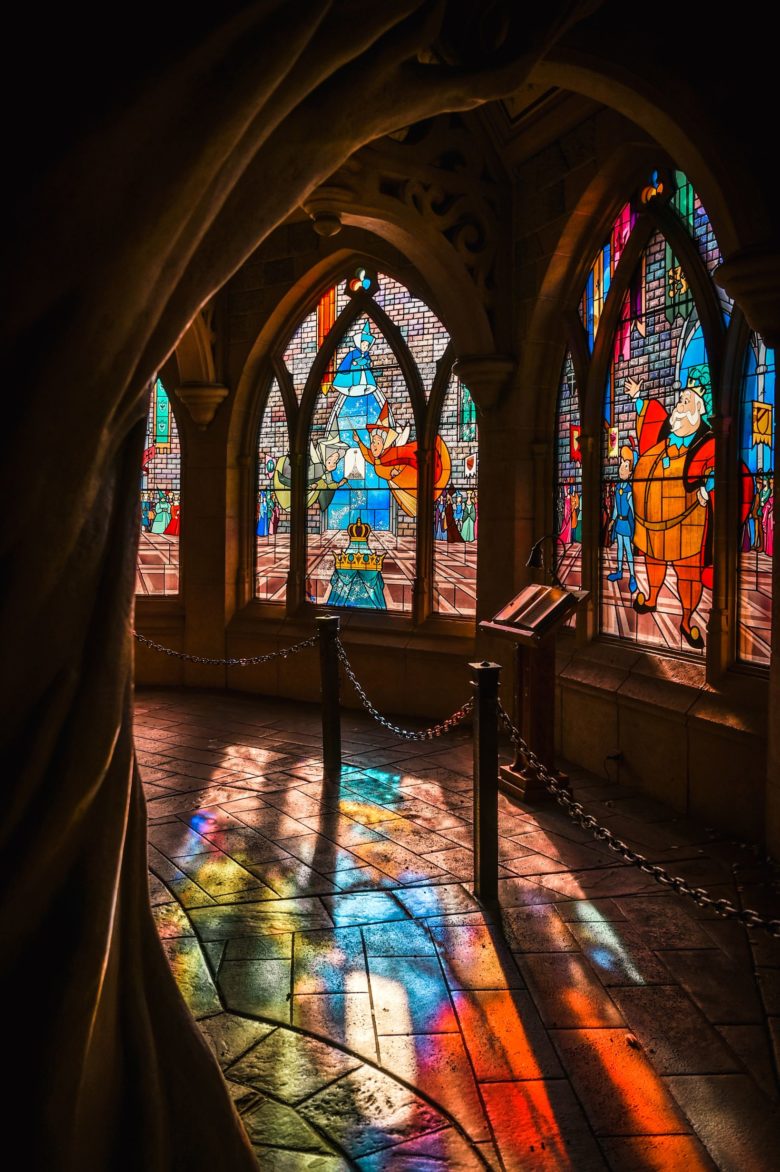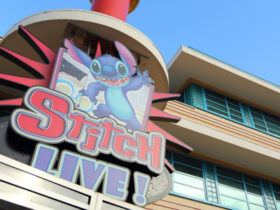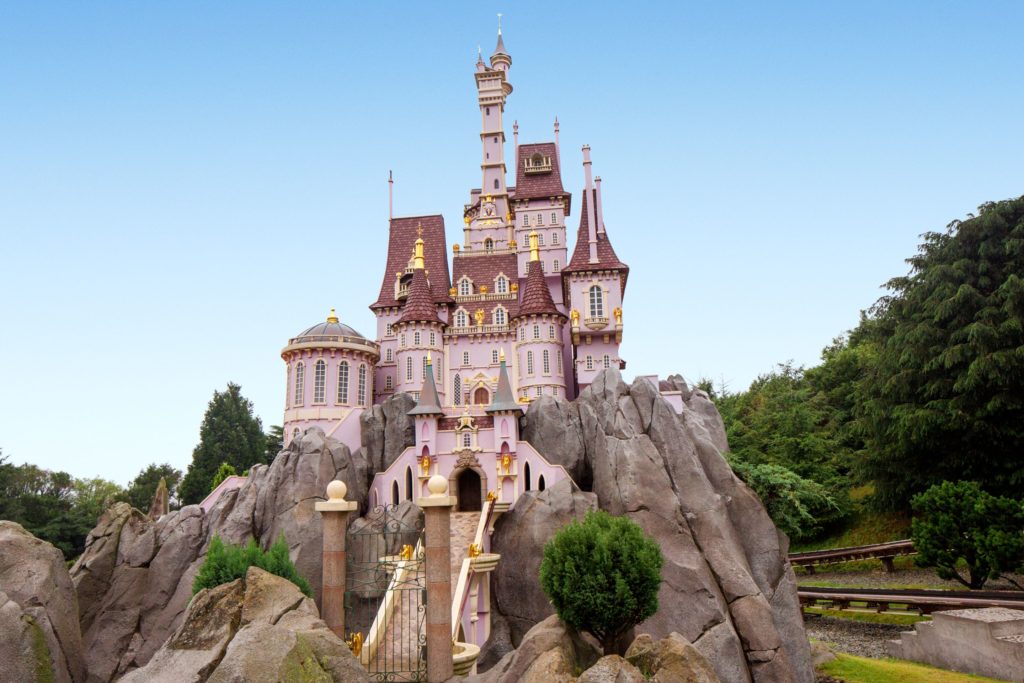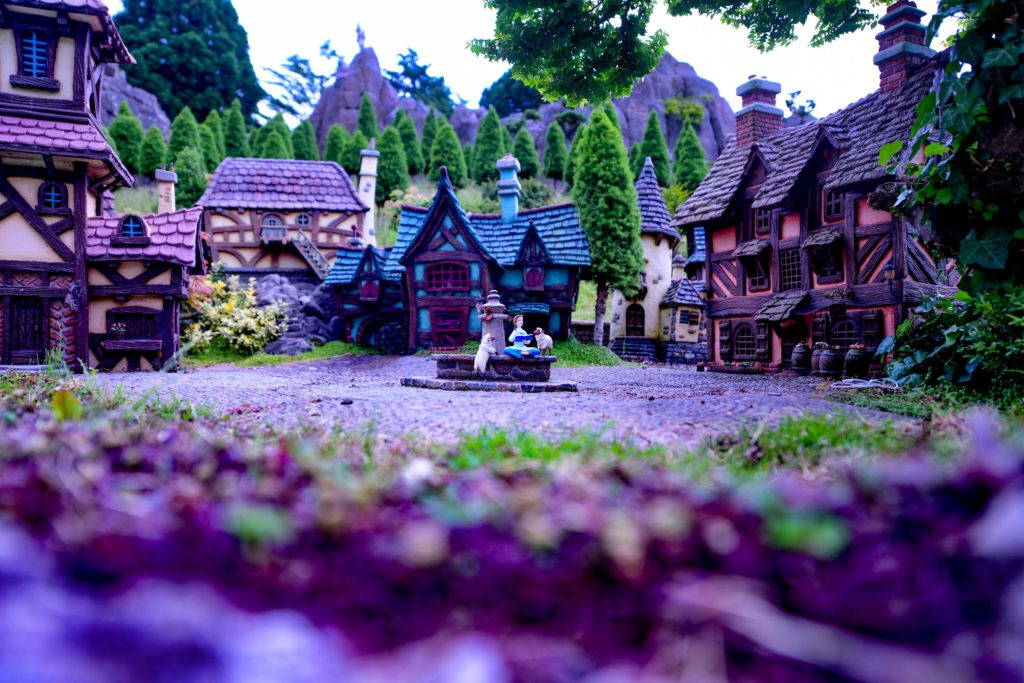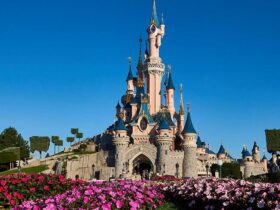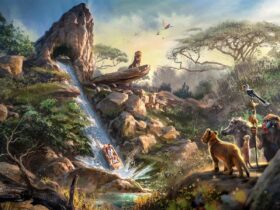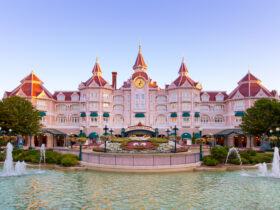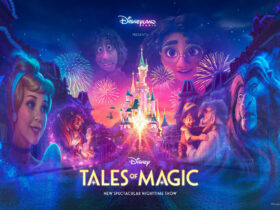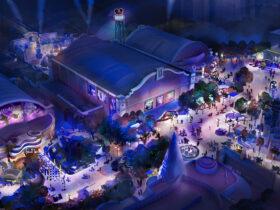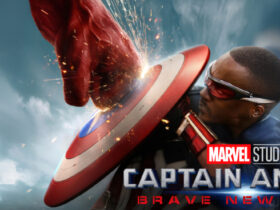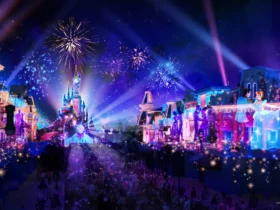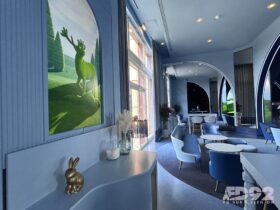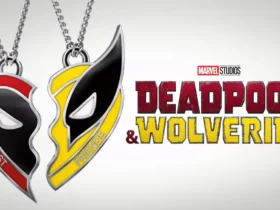Today we end our journey through the Disney Classics that inspired Imagineers for Fantasyland, covering the final period from the 1940s to present day.
Special Packages
Animation historians are accustomed to describing the productions from the period of 1942-1949 as “anthology films” or “package films” as they are compilations of short and medium-length films, sometimes associating cartoons with live-action shots. Among these productions are Fun and Fancy Free (1947), which we mentioned in our first article, as well as Make Mine Music (1946), where we can see Peter and the Wolf inspired by Serge Prokofiev’s musical tale, A Fairy Tale in Music. This is of course transposed in miniature in Storybook Land, just across from the scene dedicated to A Night on Bald Mountain. In addition to their placement near each other, both feature music from Russian composers, and Peter and the Wolf was at one time considered as a possible piece for Fantasia (1940). Prokofiev even came to Walt Disney Animation Studios in 1938 to present his work to Walt.

The other animation of this type represented at Fantasyland is The Toad and The Schoolmaster (1949), especially the “Frog Pond” segment telling of Toad Baron Tadpole’s “exploits.” He is so passionate about cars that he goes so far as to exchange his ancestral mansion for a stolen convertible. Fortunately, he was able to count on his faithful friends to get him out of the predicament and get his property back!
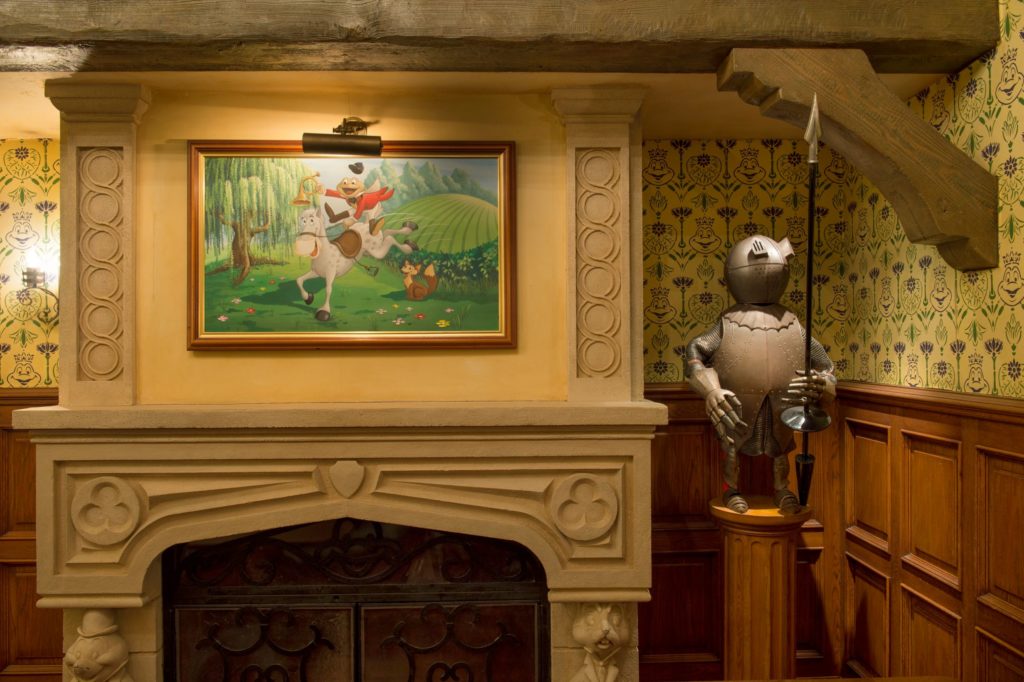
This mansion is Toad Hall Restaurant, which you can enjoy in the British part of Fantasyland, right next to Peter Pan’s Flight. Its architecture, in the purest “Tudor” style tradition, resembles that of the film and attests to the noble origins of the Baron. As for the decor, it is in keeping with the whimsical personality of the premises’ owner. Have you noticed the weathervane perched on the turret to the right of the entrance? It evokes precisely this passion for cars which is at the heart of the film!

The Silver Age
This period of renewal for Walt Disney Animation Studios brings together feature films from the 1950s -1967 in which Walt was directly involved. With the exception of The Jungle Book (found in Adventureland) and 101 Dalmatians (cited on Main Street, U.S.A.), almost all of the other animated films of this period are represented at Fantasyland.
Cinderella, released on February 15, 1950, was the first of this lineage and a success worthy of Snow White and the Seven Dwarves. At Fantasyland, we can find her world at Princess Pavilion and more prominently at Cinderella’s Royal Inn. Although the place is full of allusions to the film, Imagineers were particularly concerned with replicating the tower where she lives in the film, based notably on sketches by legendary Art Director Ken Anderson.

Alice in Wonderland (1951) holds a special place at Fantasyland, around two iconic sequences from the film. The famous “tea party” inspired Mad Hatter’s Tea Cups and March Hare Refreshments, while the Queen of Hearts’ gardens are seen in Alice’s Curious Labyrinth. These sequences were both designed by Mary Blair, a major figure in the Studios who Walt acknowledged for her modern and colorful style. For Alice in Wonderland, she added black pencil striations to the hedges of the labyrinth, a nod to John Tenniel, the original illustrator of Lewis Carroll’s novel. This adds texture and relief to the maze of vegetation, just waiting to be transposed into the real world. John Tenniel’s influence can also be seen in the patterns that decorate Mad Hatter’s Tea Cups.
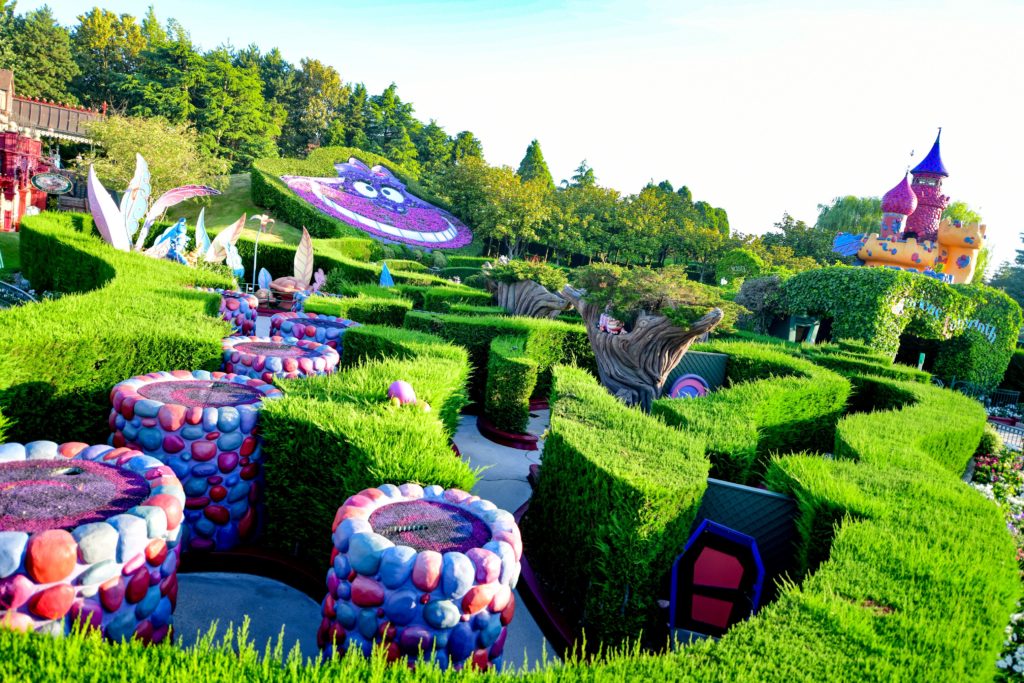
Pizzeria Bella Notte obviously revives the famous scene from Lady and the Tramp (1955), painted on one of the walls. Meanwhile Joe the Chef and the owner Tony are represented on two separate columns, with one offering bones and the other offering a spaghetti dish – the house specialty – to our two favorite characters!
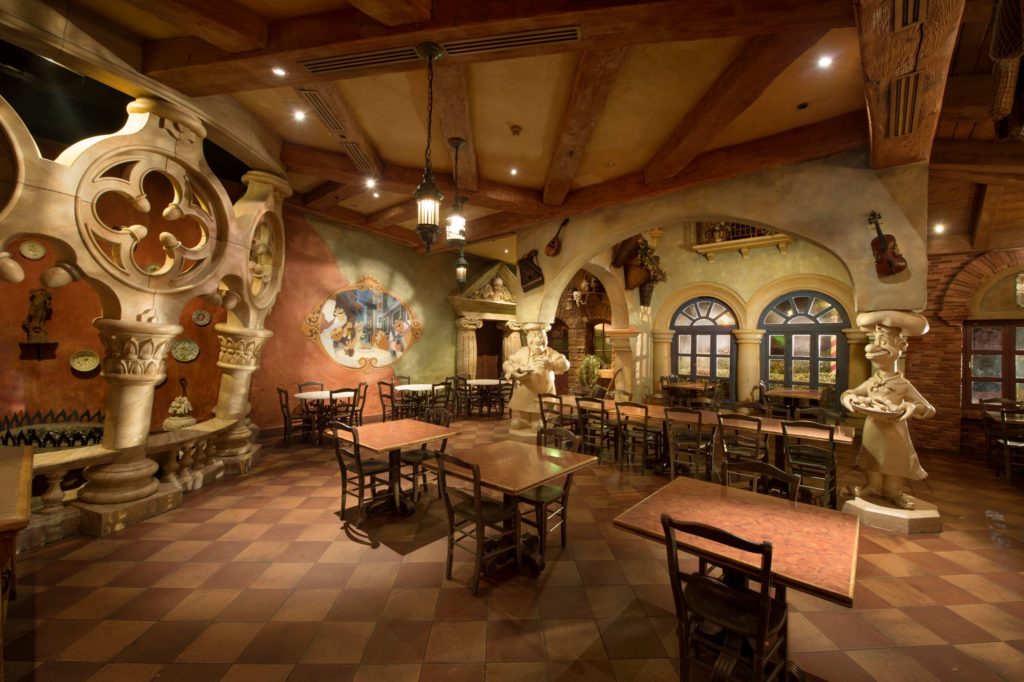
Sleeping Beauty (1959) is evoked both in Sleeping Beauty Castle and La Confiserie des Trois Fées. To create this Disneyland Park icon, Imagineers more or less turned to “Les Très Riches Heures du Duc de Berry”, a 15th century book known for its Medieval illustrations of illuminations and miniatures, from which the film’s artistic director Eyvind Earle was also inspired. This resulted in a style that is very detailed and rich in numerous historical references, as well as geometrical, predominantly noticeable in the characteristic pruning of the trees around the Castle.

As for Merlin, hero of the 1963 film The Sword in the Stone, guests can visit his store in the Castle filled with all sorts of objects from various periods, in as much disarray as his room in Sir Ector’s Castle. Then there’s the mythical sword to be dislodged from the anvil by the future King Arthur found in the Castle’s Courtyard, as well as in Fantasyland.
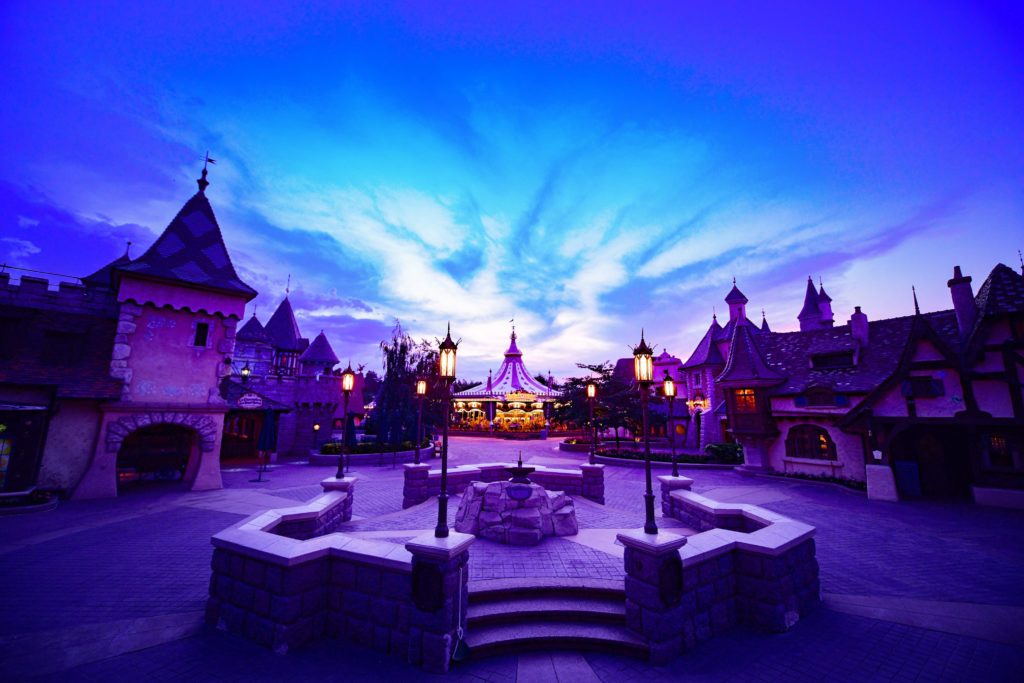
A new golden age
Though Fantasyland proudly represents Walt Disney’s films, Imagineers have not forgotten the more recent productions, especially from the Disney Renaissance period beginning in 1989. It is in the “Pays des Contes de Fées,” opened on March 26, 1994, that these new classics make their appearance at Fantasyland.
It is there that we can find The Little Mermaid (1989), and in particular Prince Eric’s castle, built according Artistic Director Michael Peraza’s original design. He had imagined this castle with its original shapes, all cylindrical, and deliberately with Mediterranean colors.
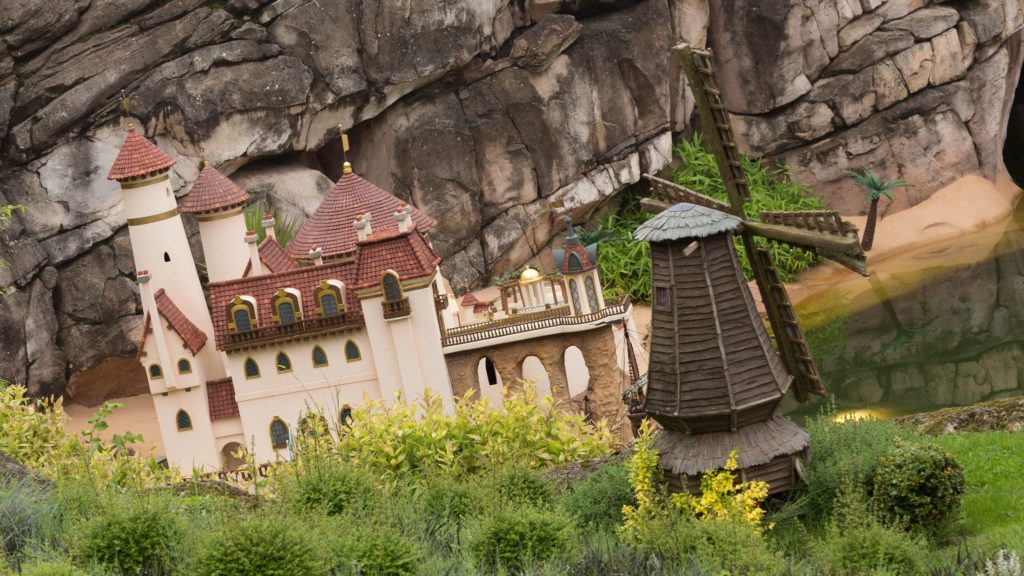
Then there’s Beauty and the Beast (1991), the only animated film in history to have been nominated for an Oscar for Best Film. Guests can admire the village and the Beast’s castle, two settings that owe much to Hans Bacher, the future artistic director for Mulan (1998), for his superb preliminary studies.
As for the tiger’s head giving access to the Cave of Wonders in Aladdin (1992), it constitutes a decisive step in the history of animation because it was the first to be entirely animated by computer, along with the Flying Carpet.

And we end our journey with Tangled (2010) and its famous tower. A first version of Rapunzel’s tower existed when the “Pays des Contes de Fées” attraction opened, but it was replaced in 2010 with a tower more similar to the one designed by Dave Goetz and Dan Cooper for the film. It stands just above the valley where Snow White’s cottage is located, as if the time and space between these two classics no longer existed. Ah, the magic of Fantasyland…


